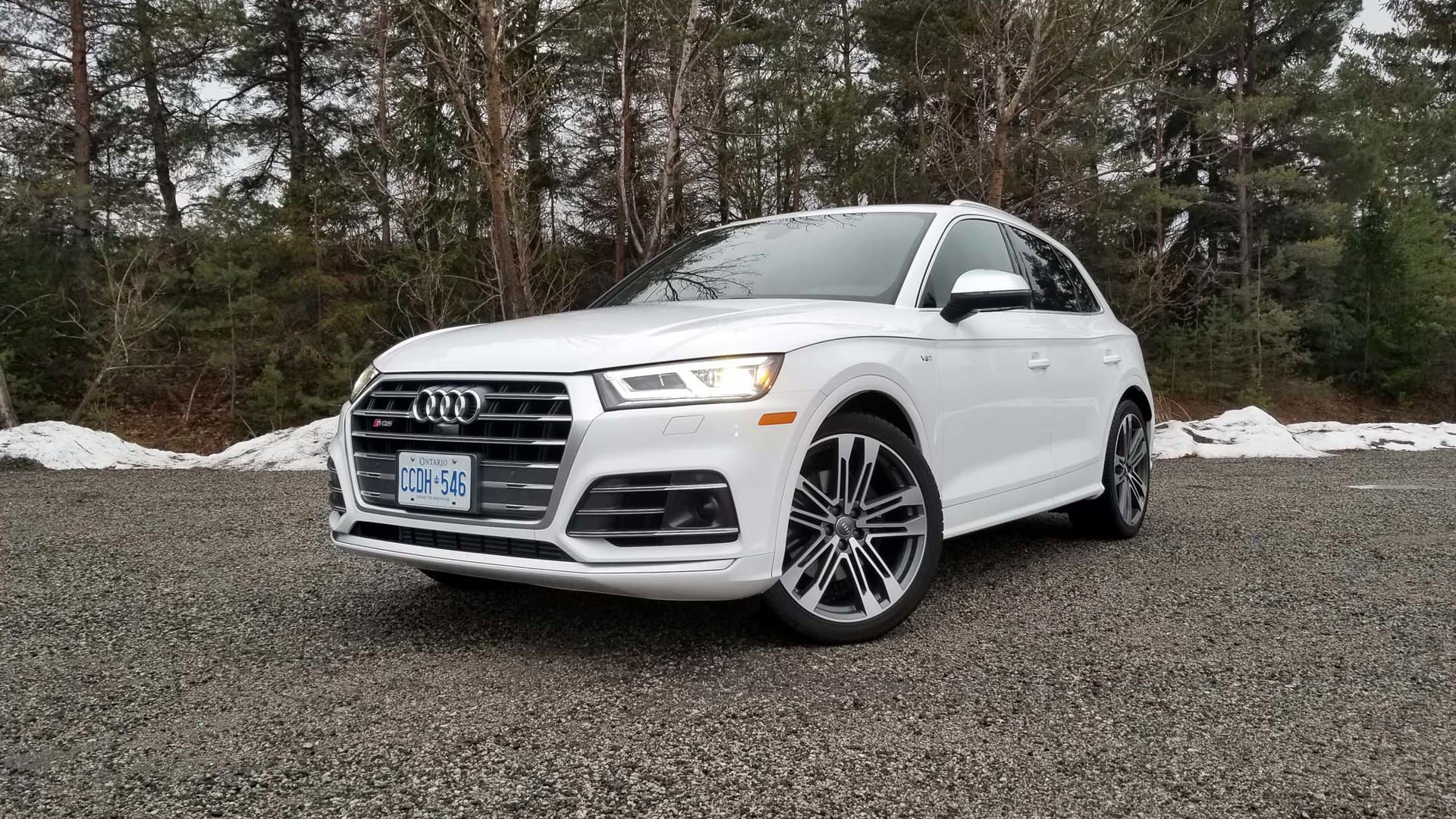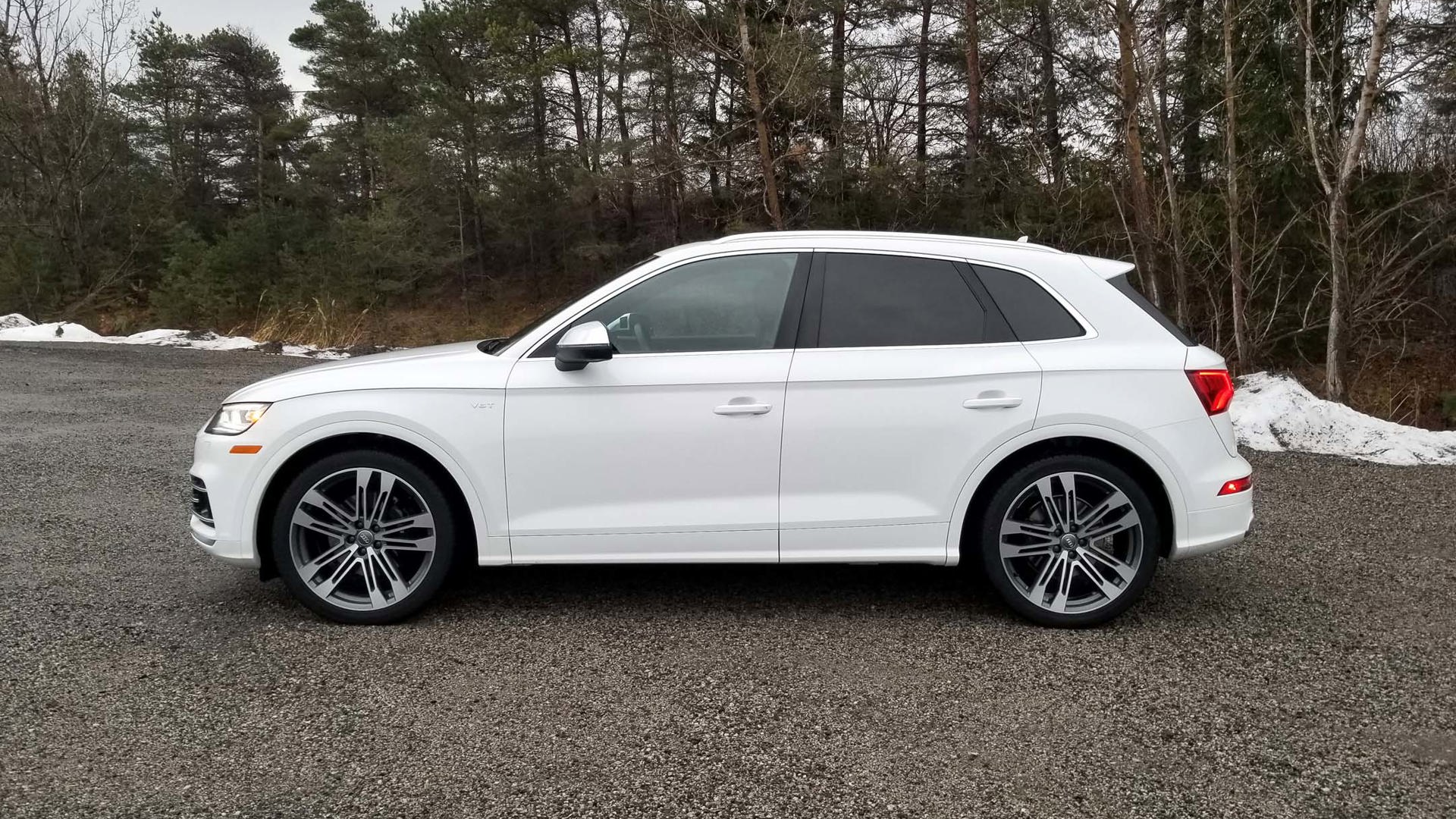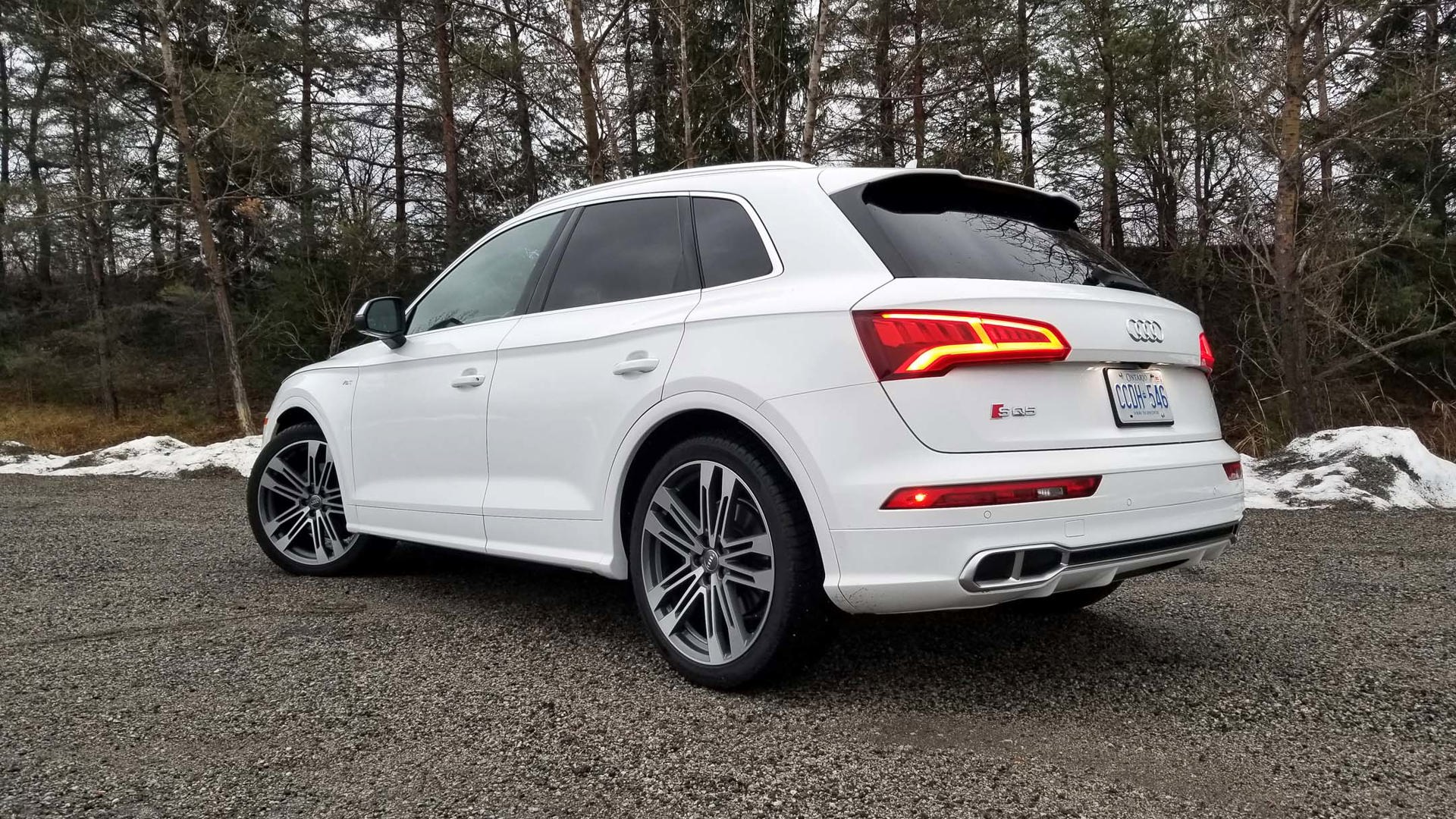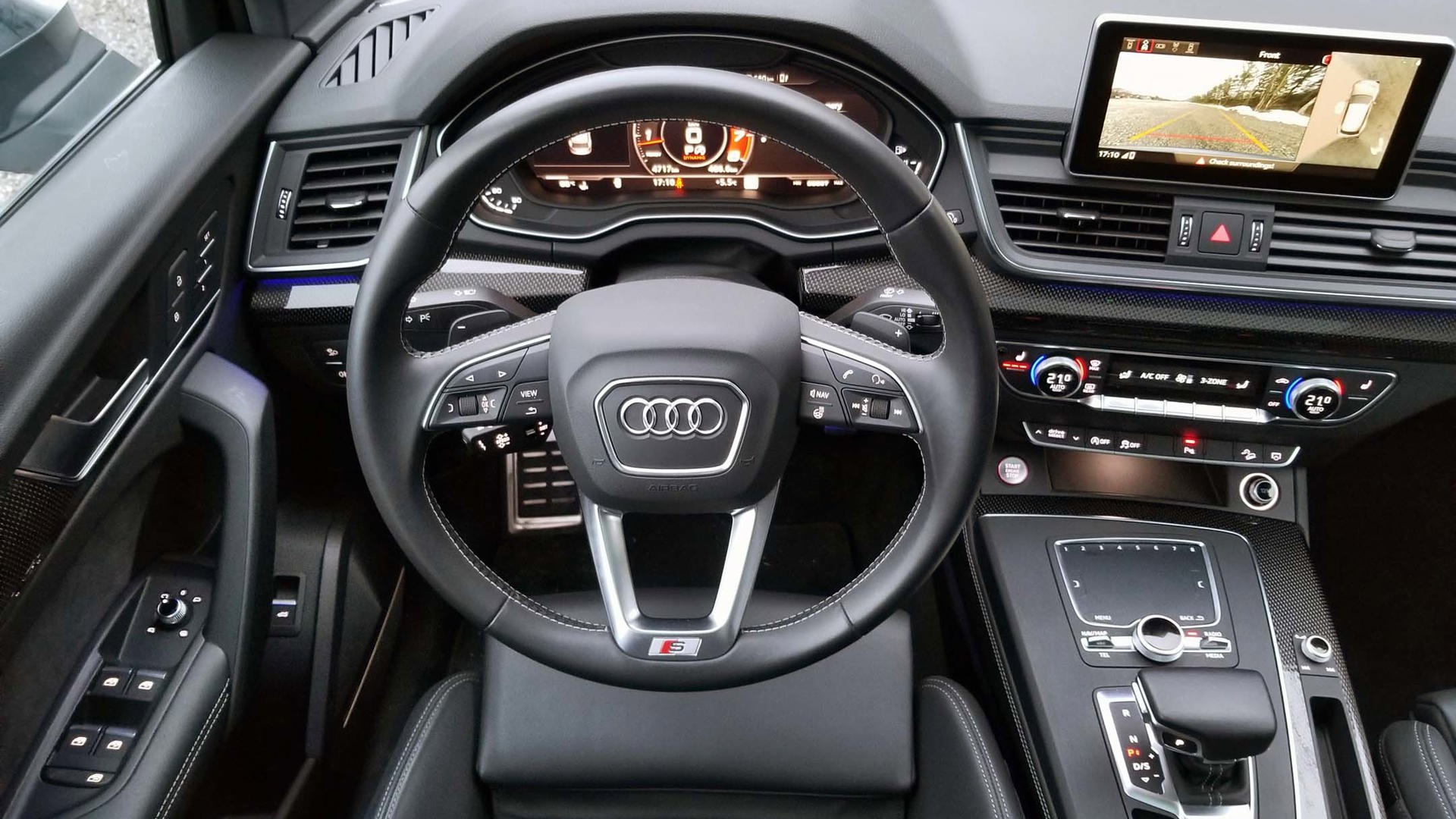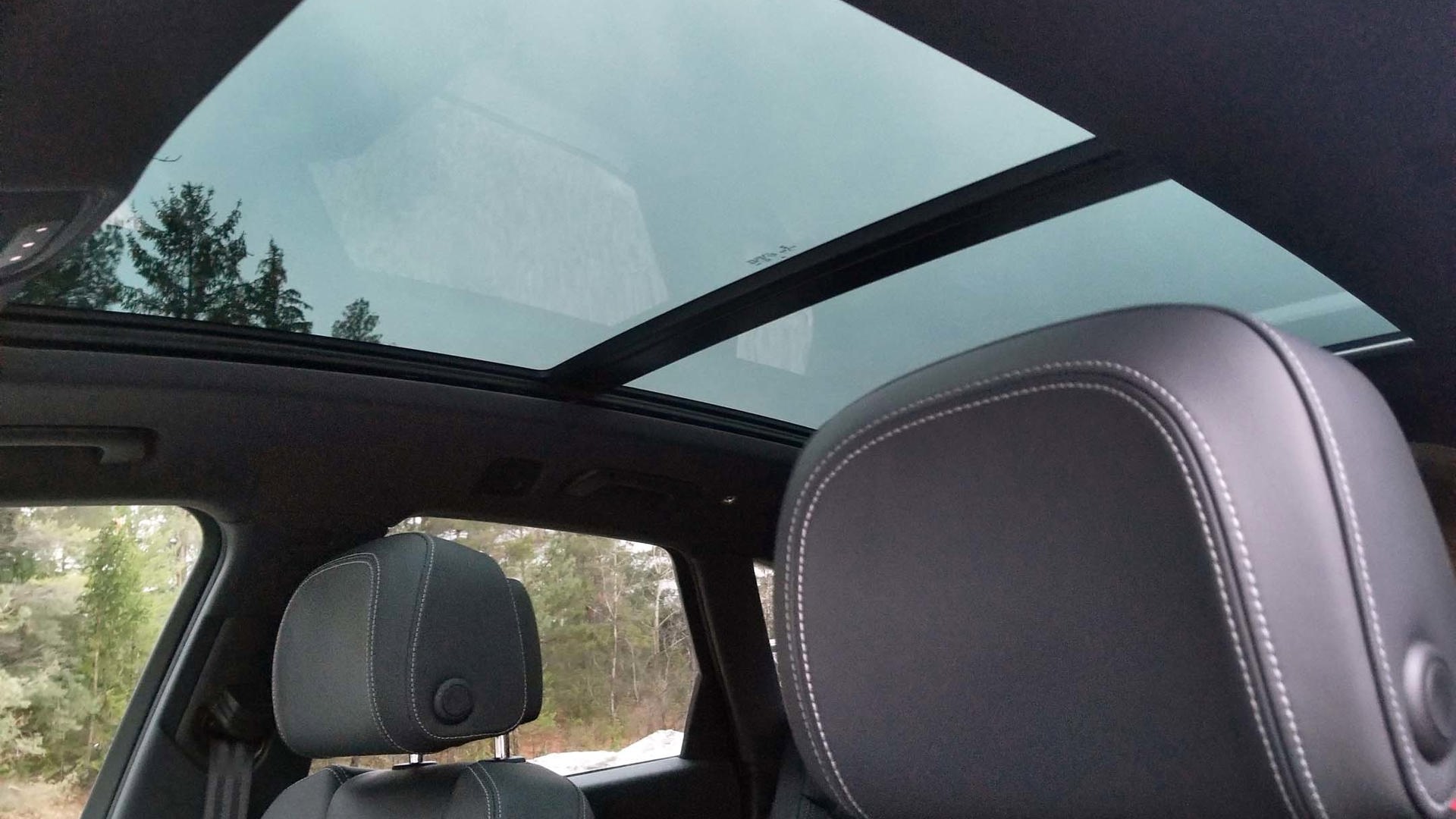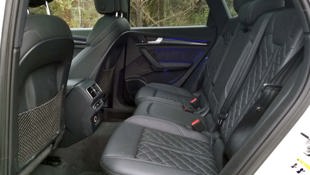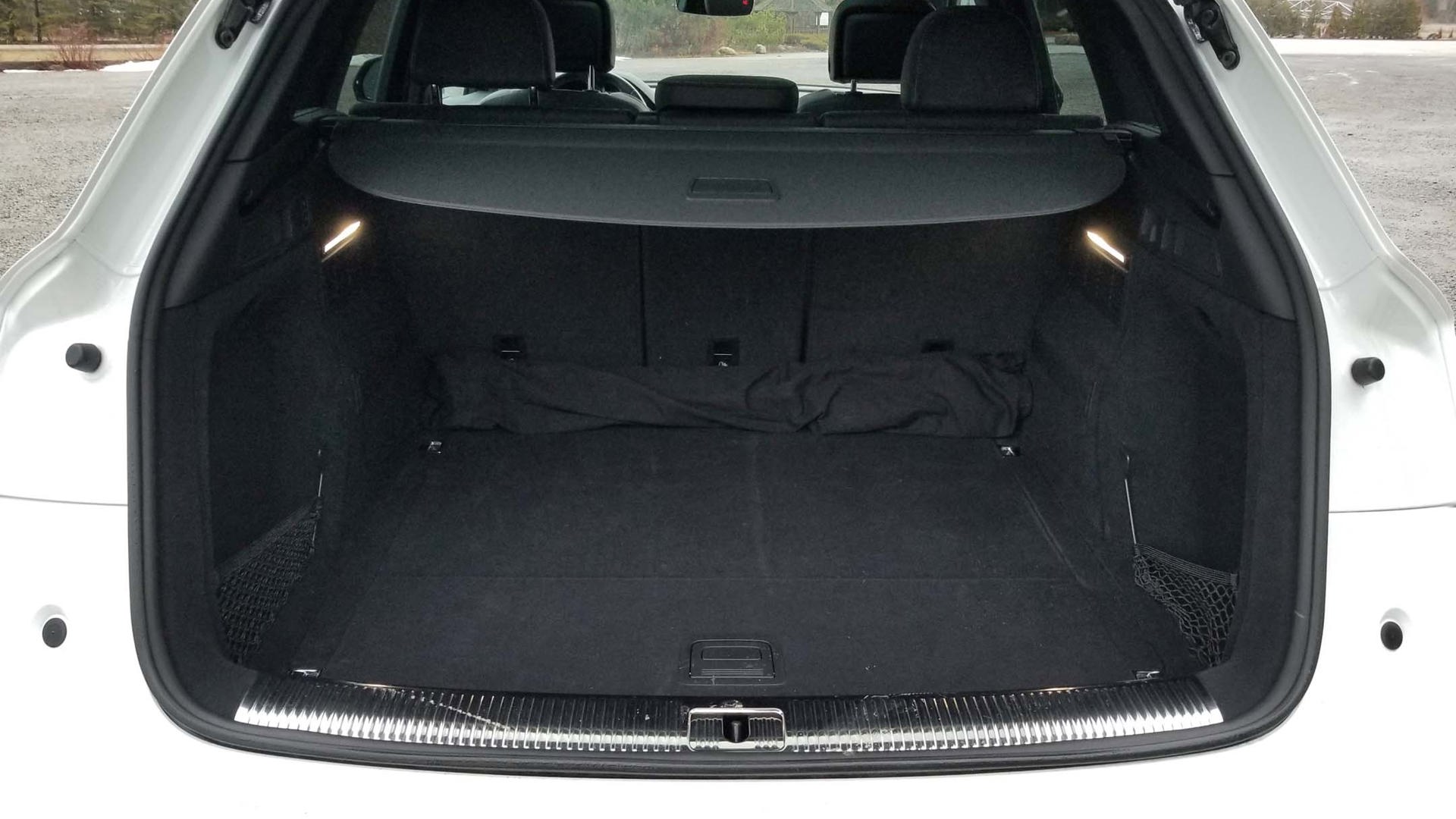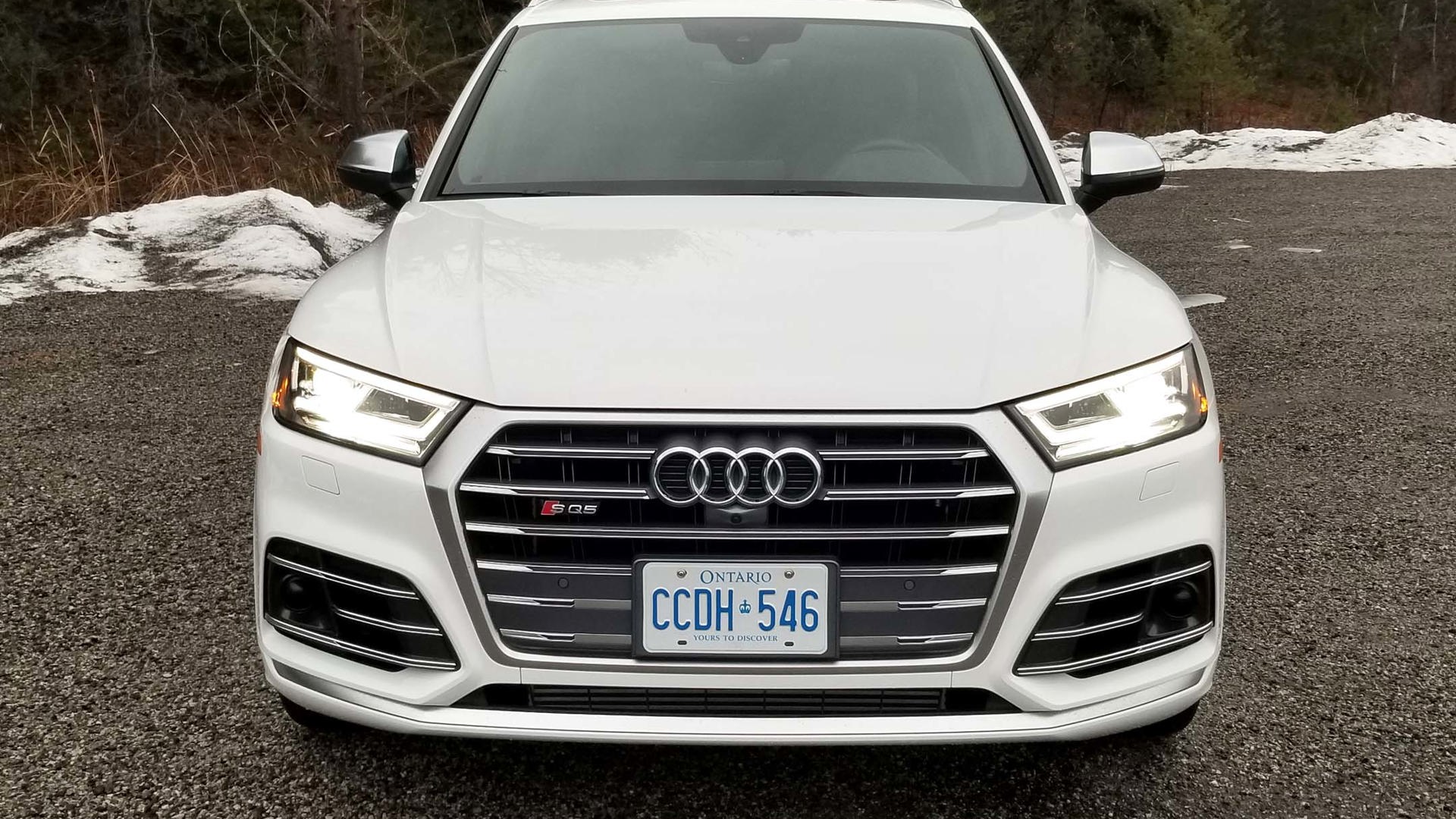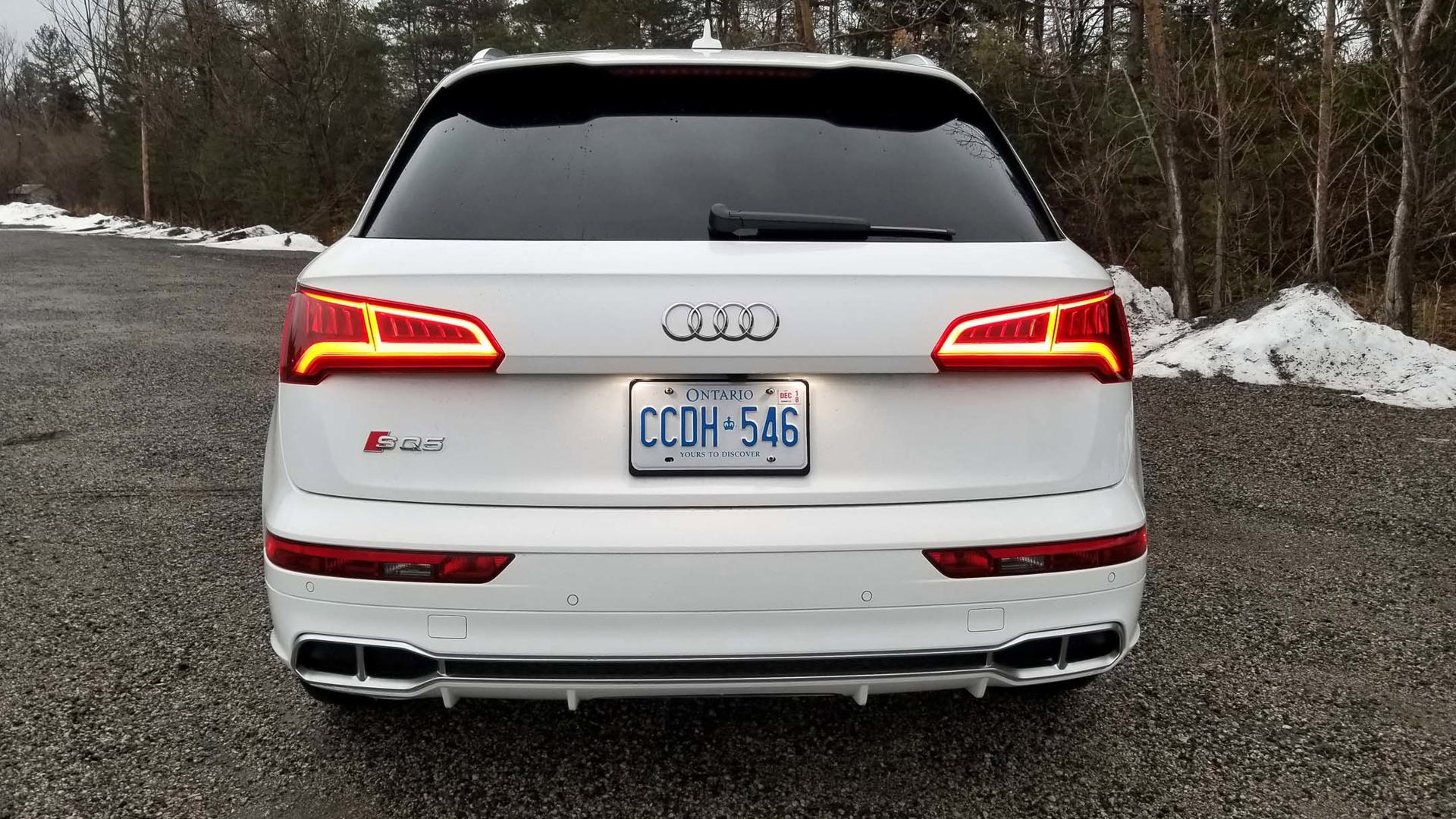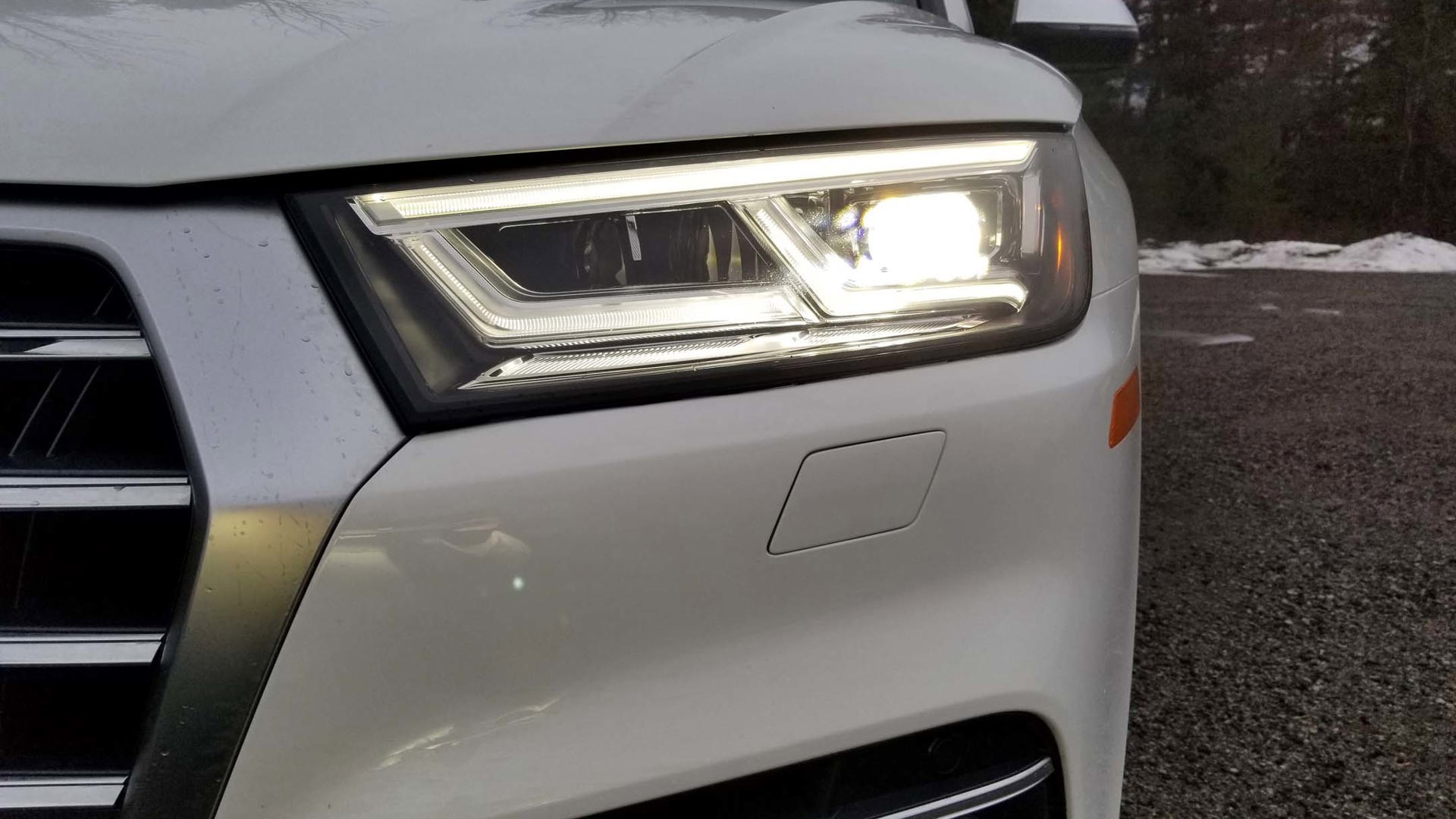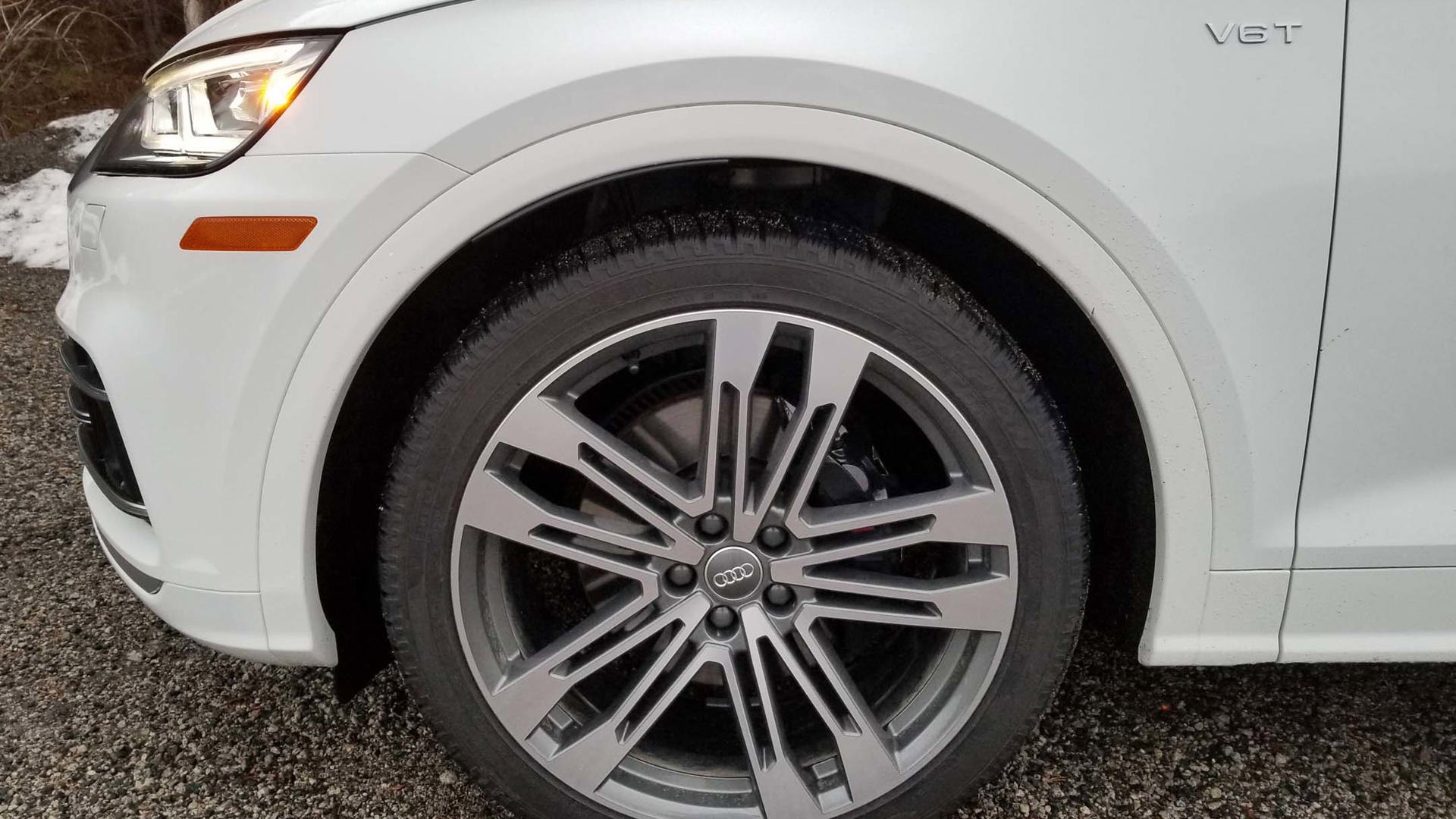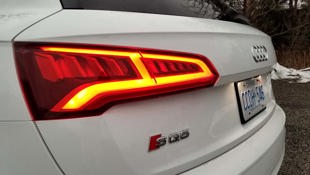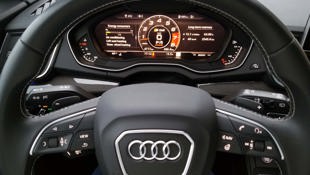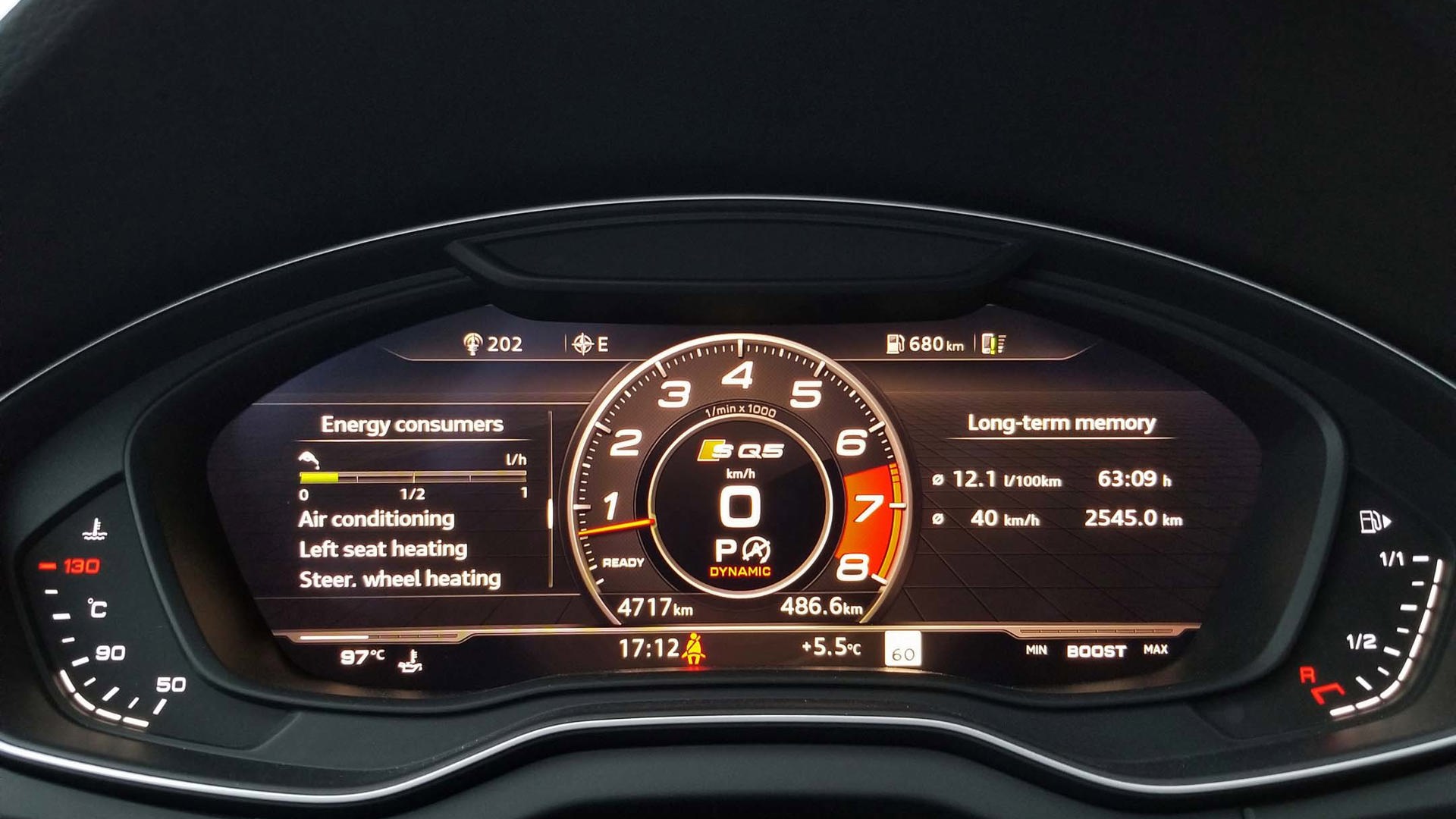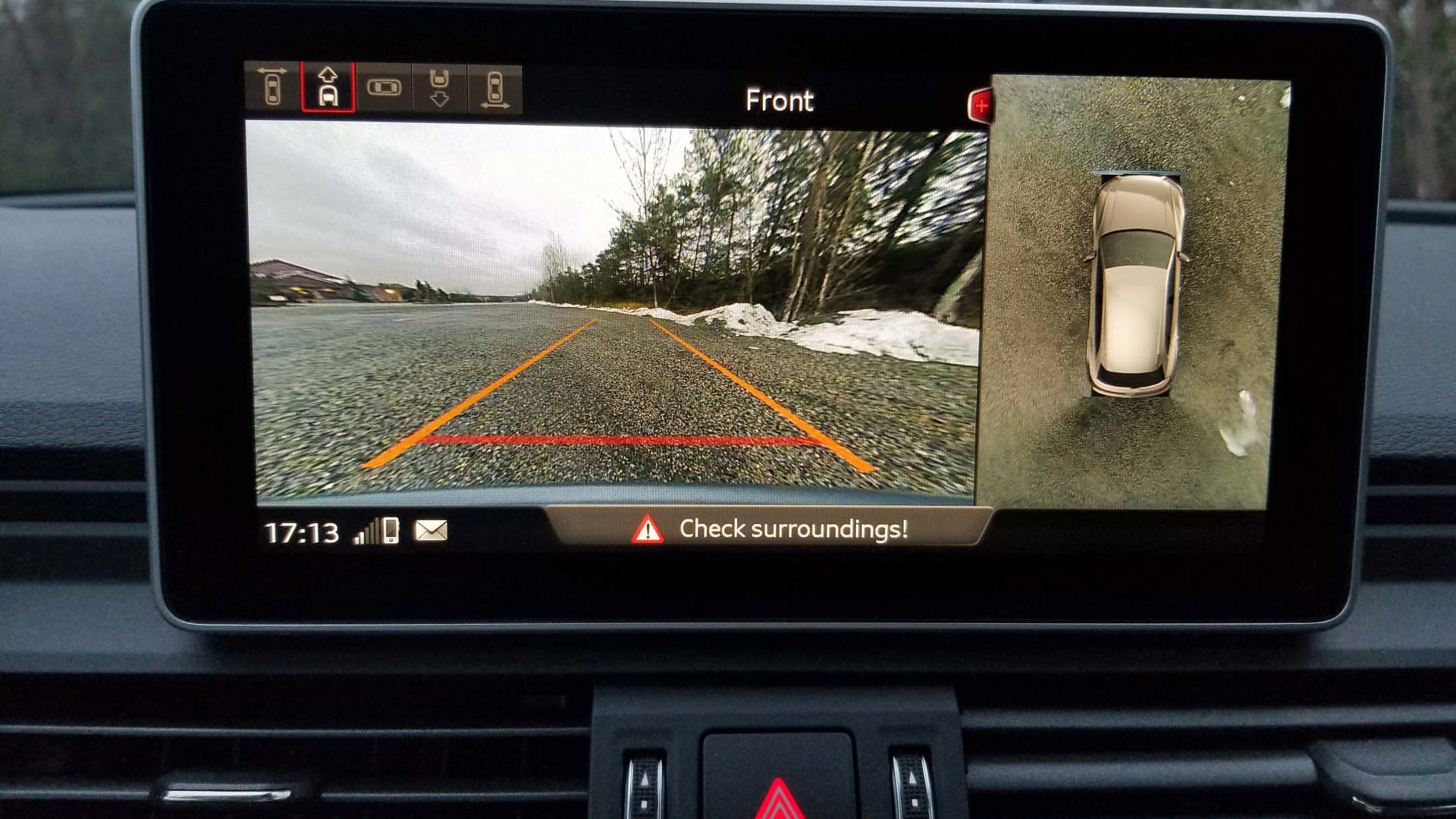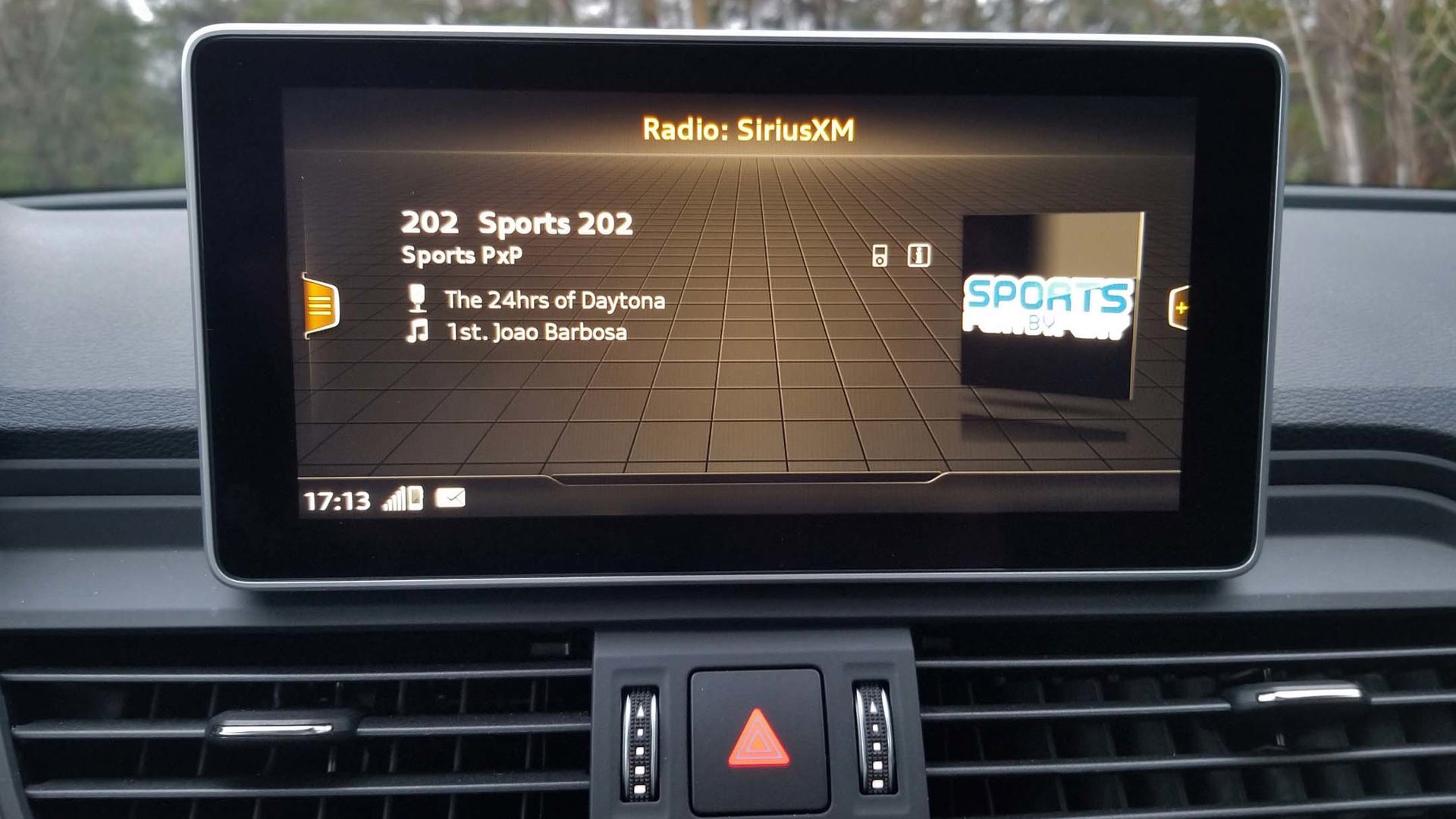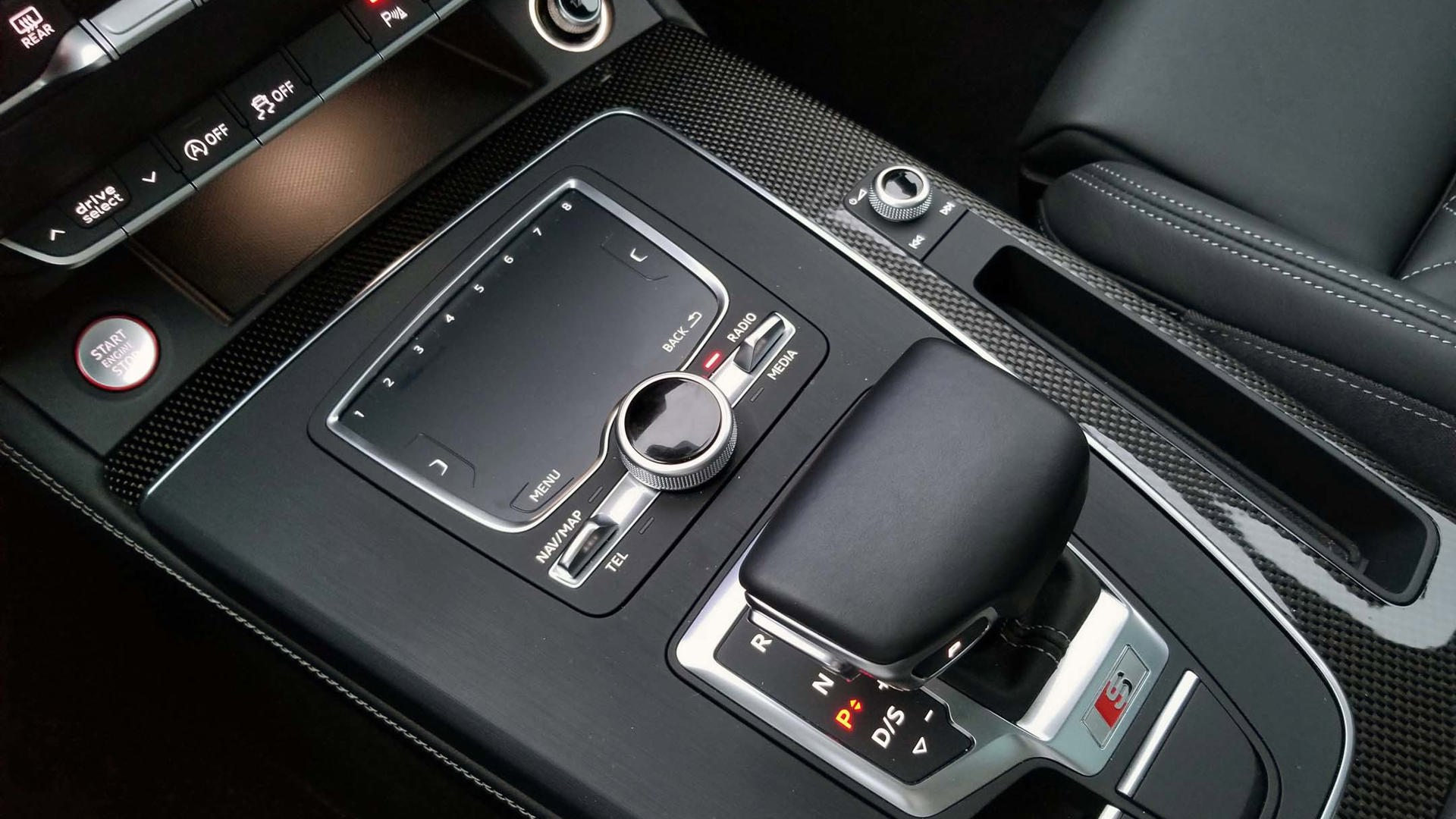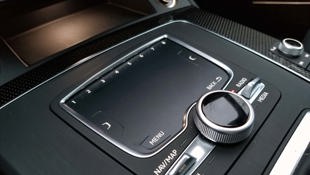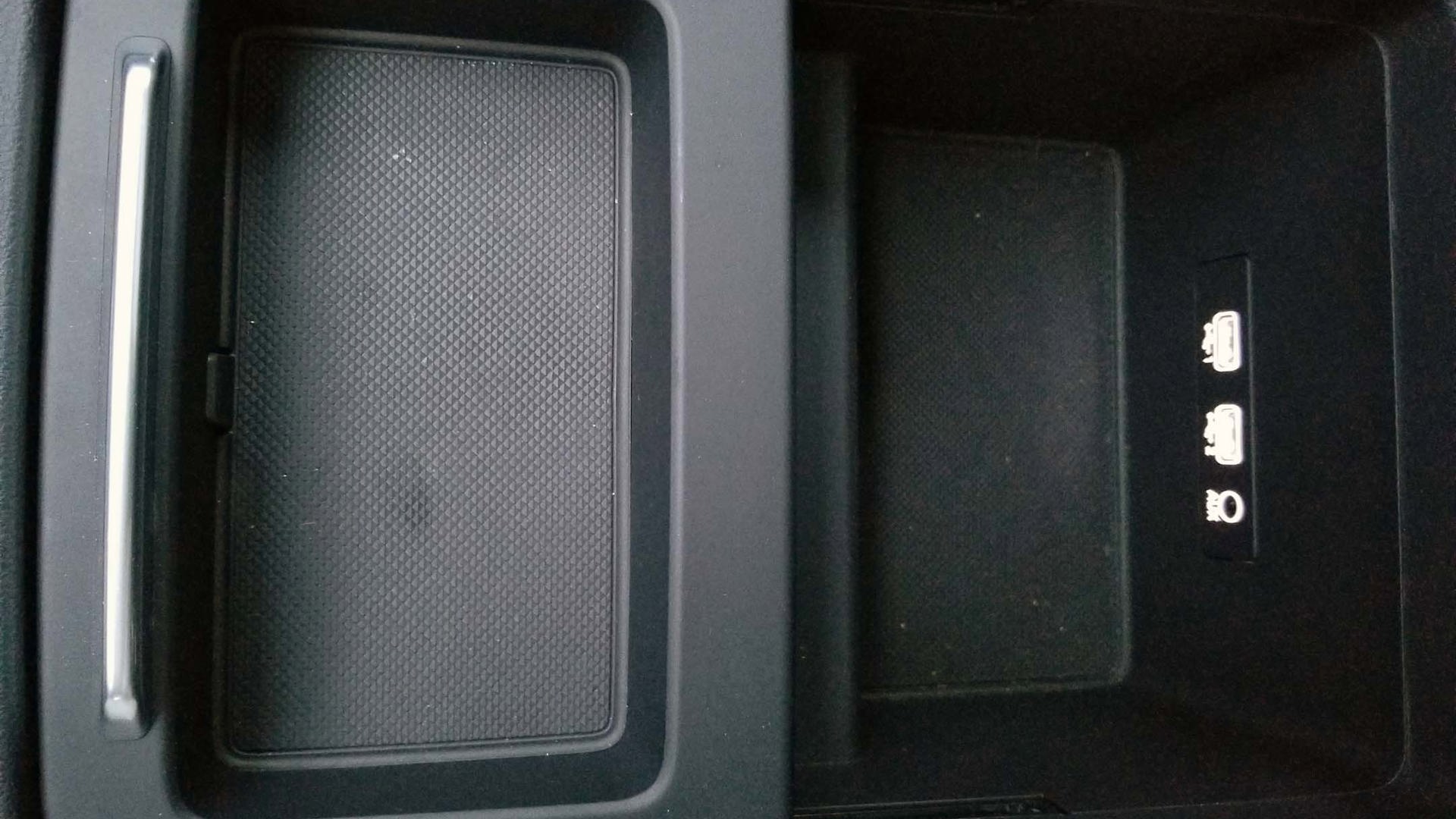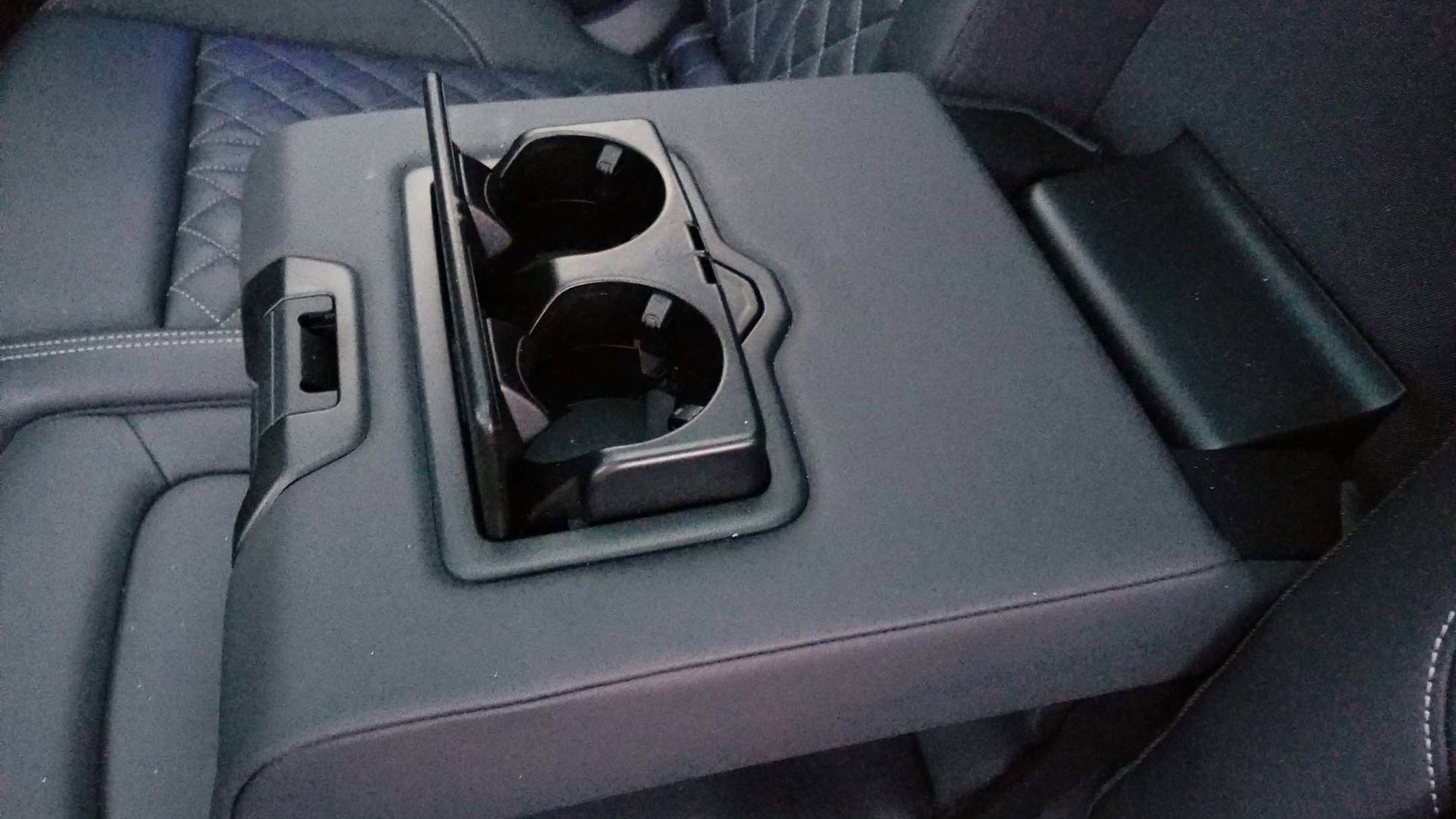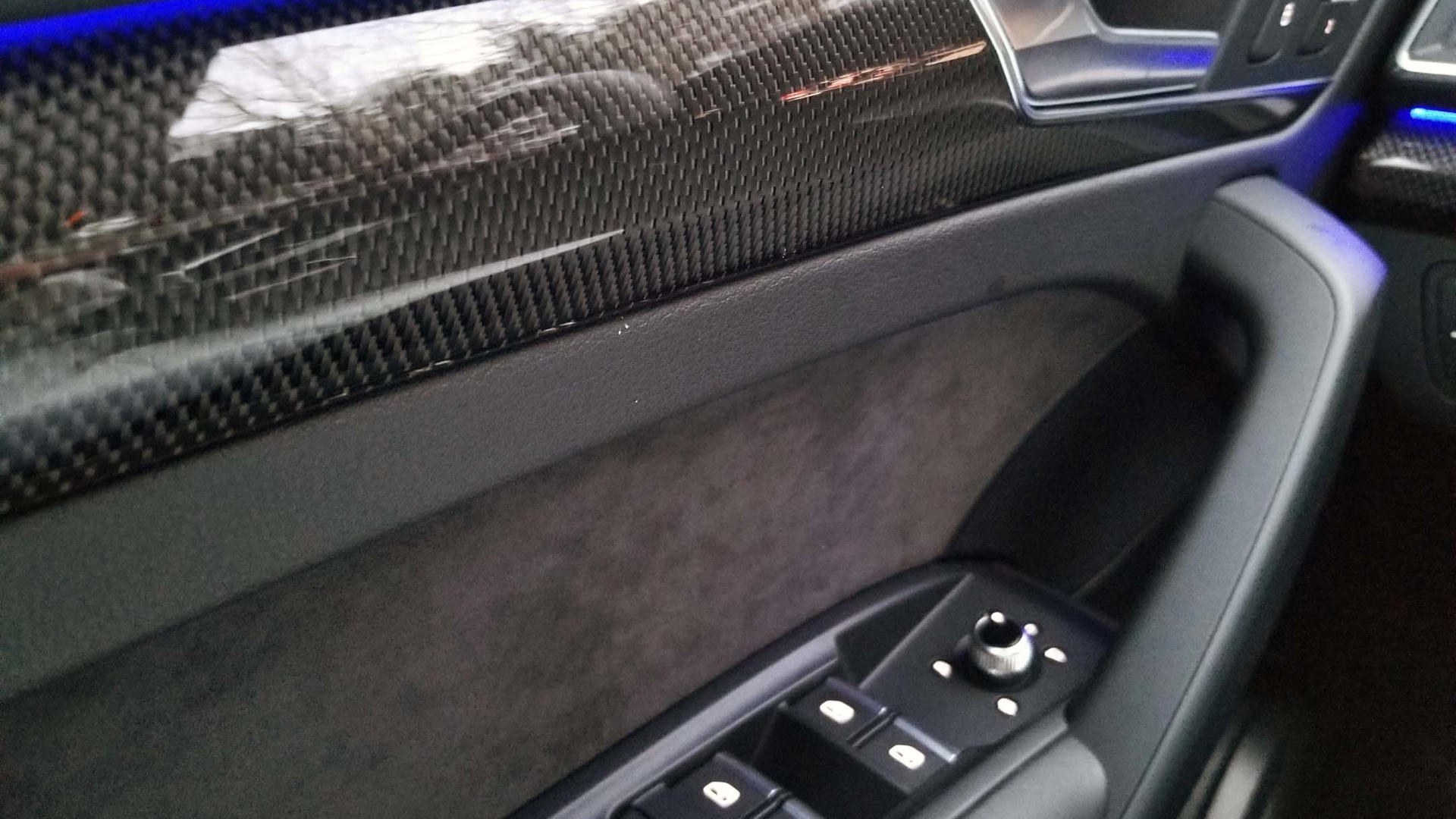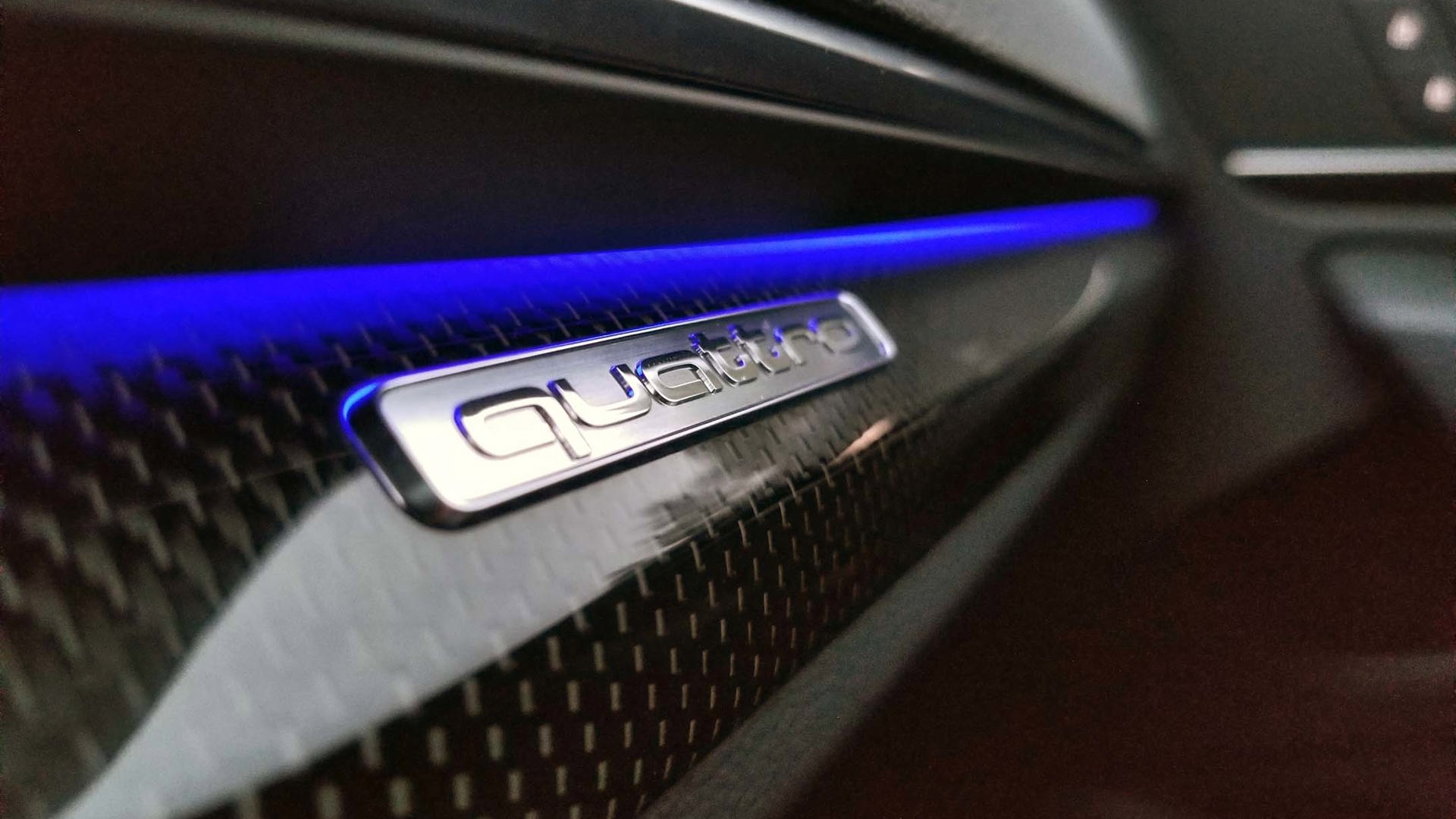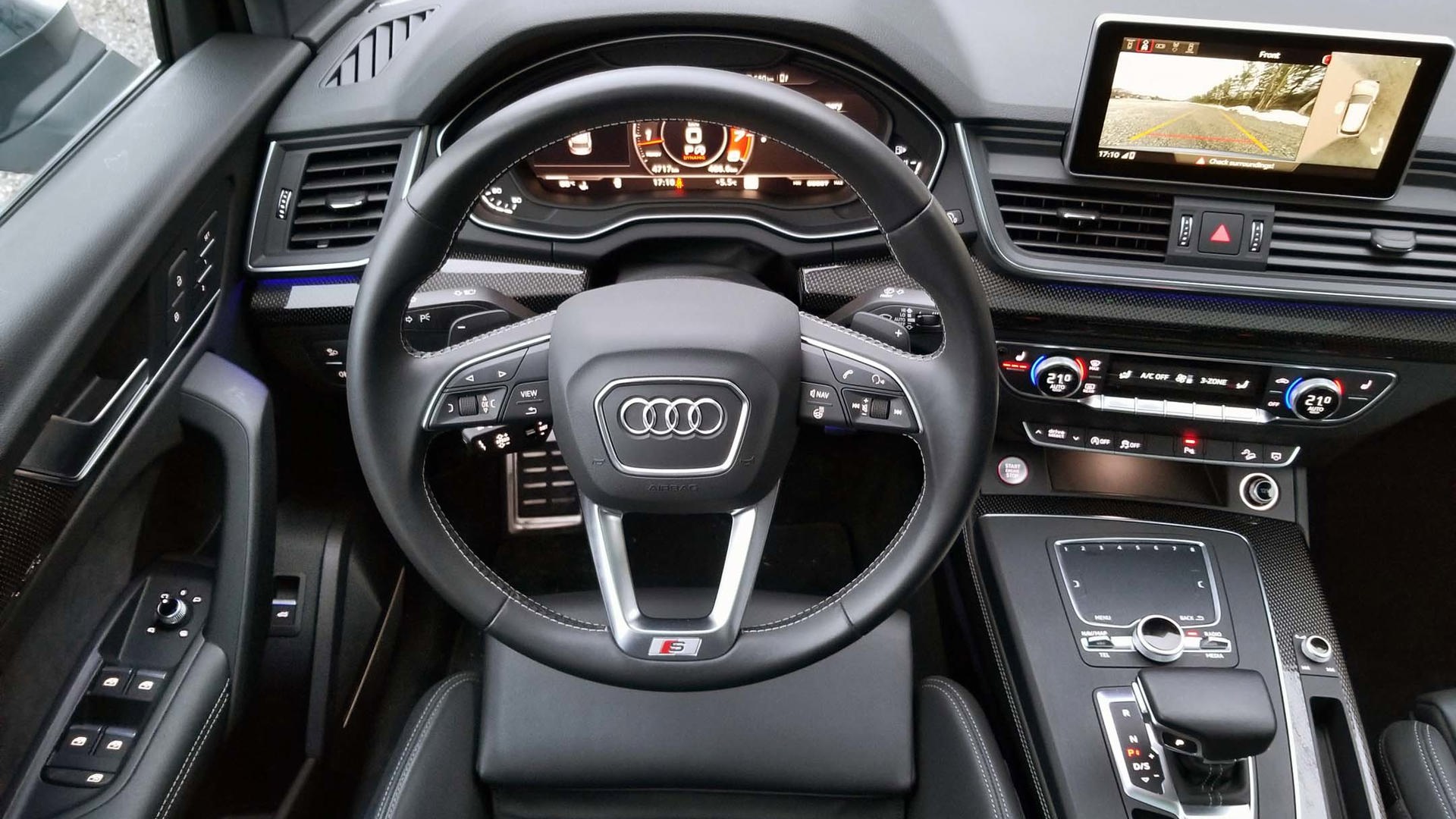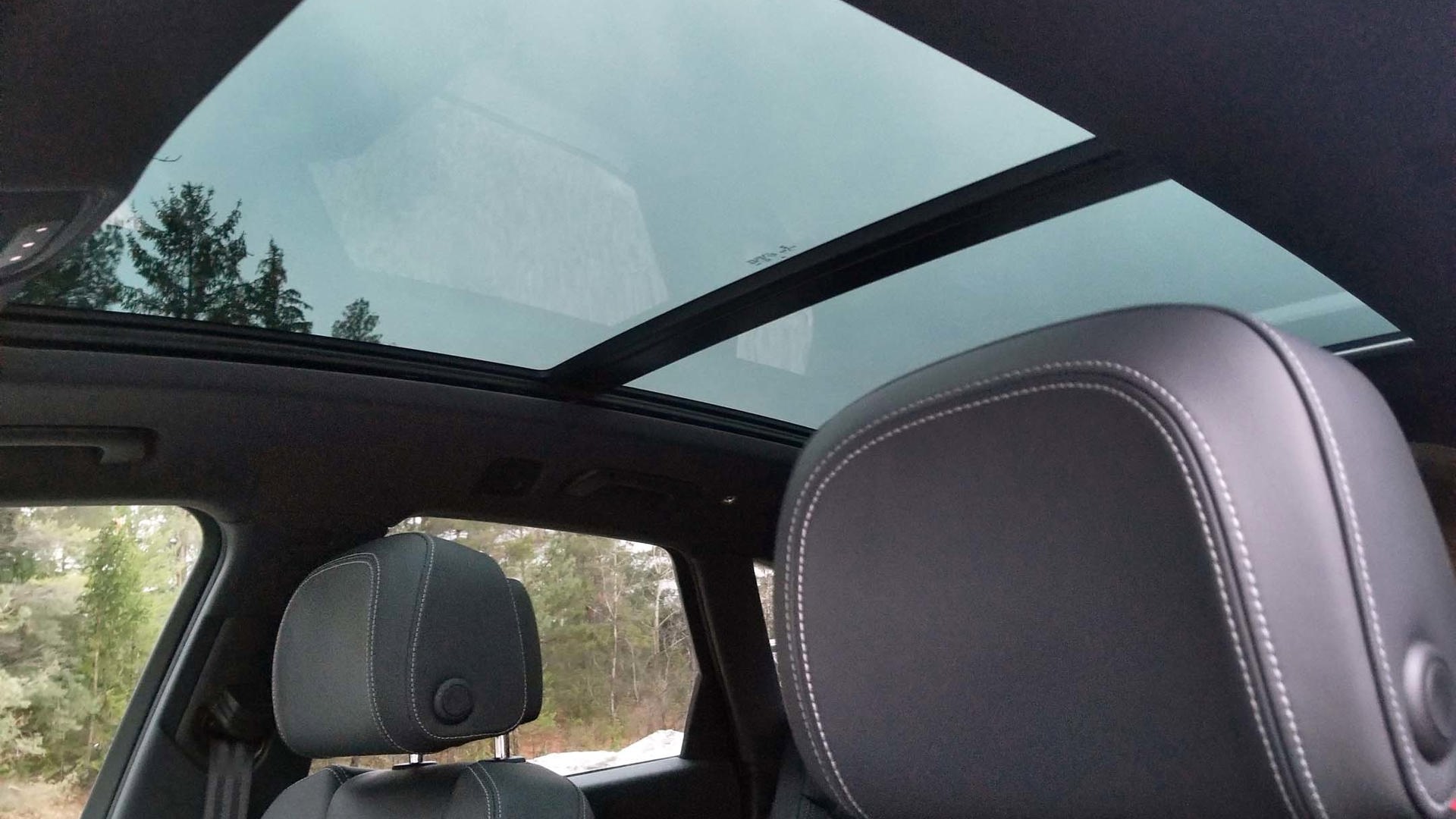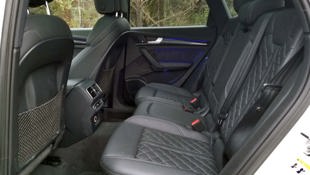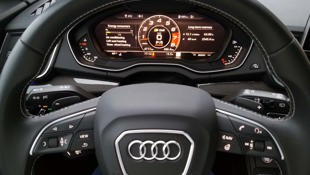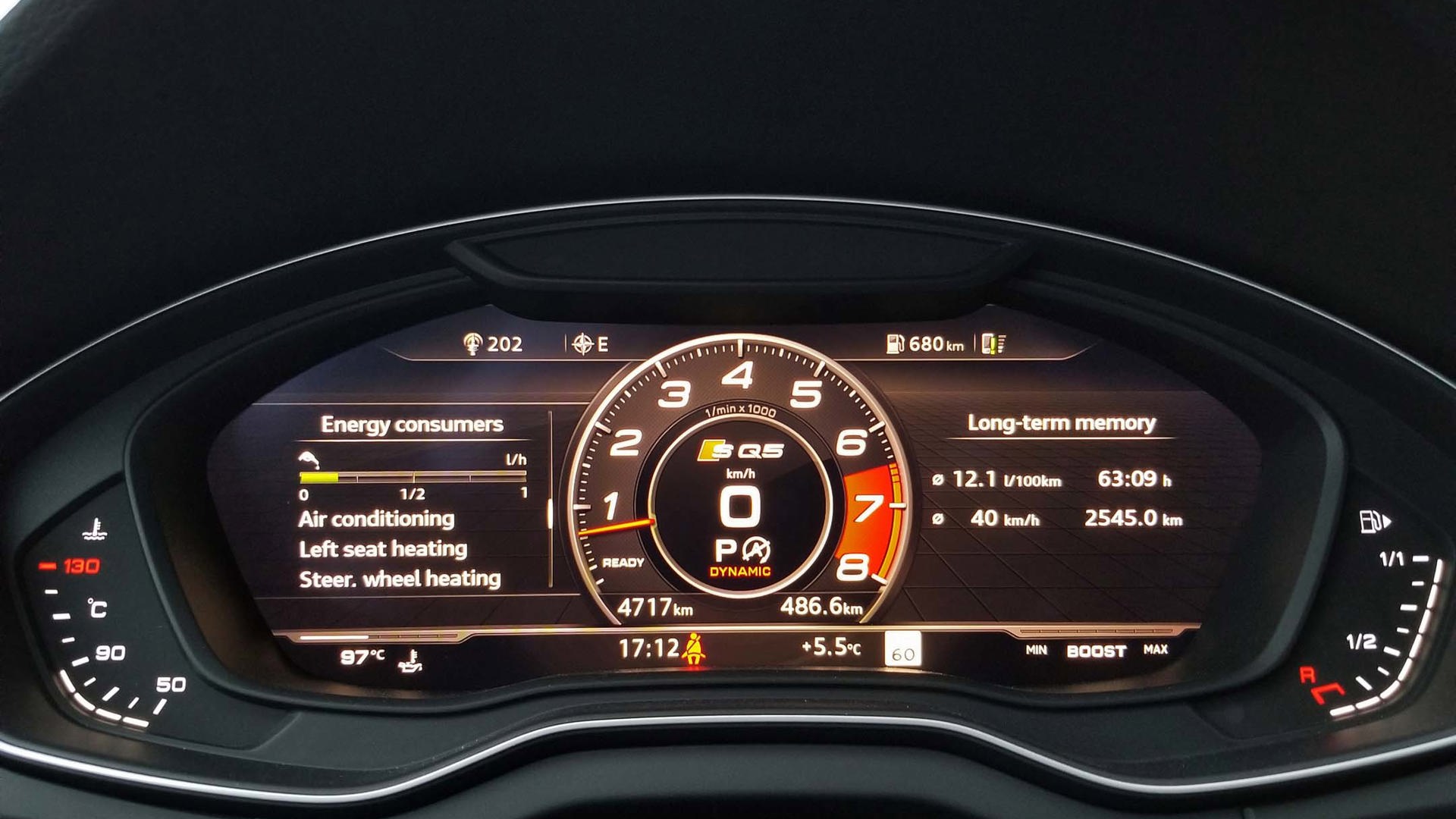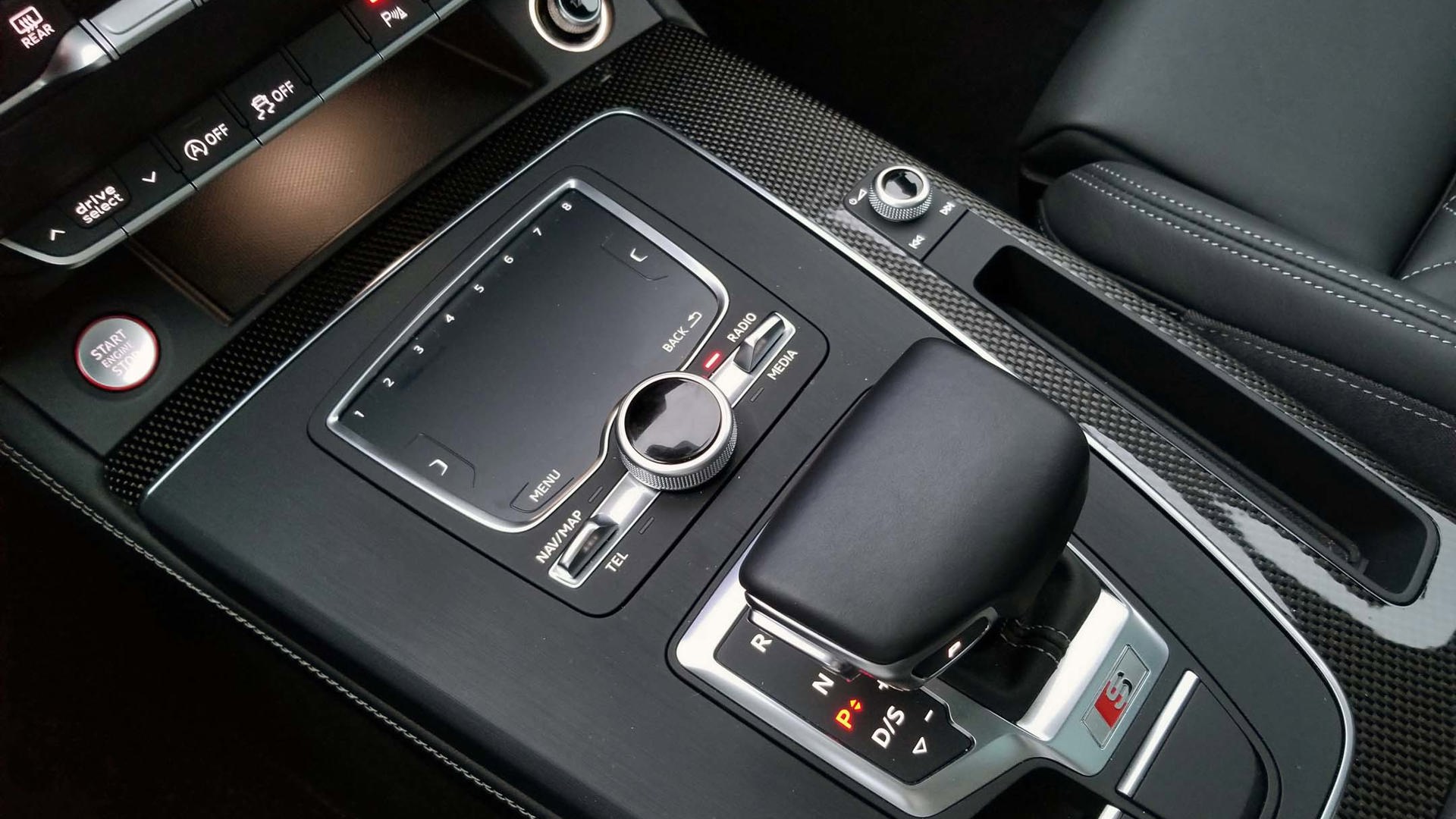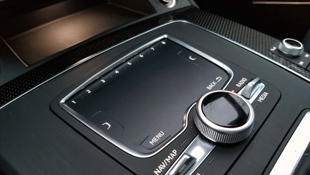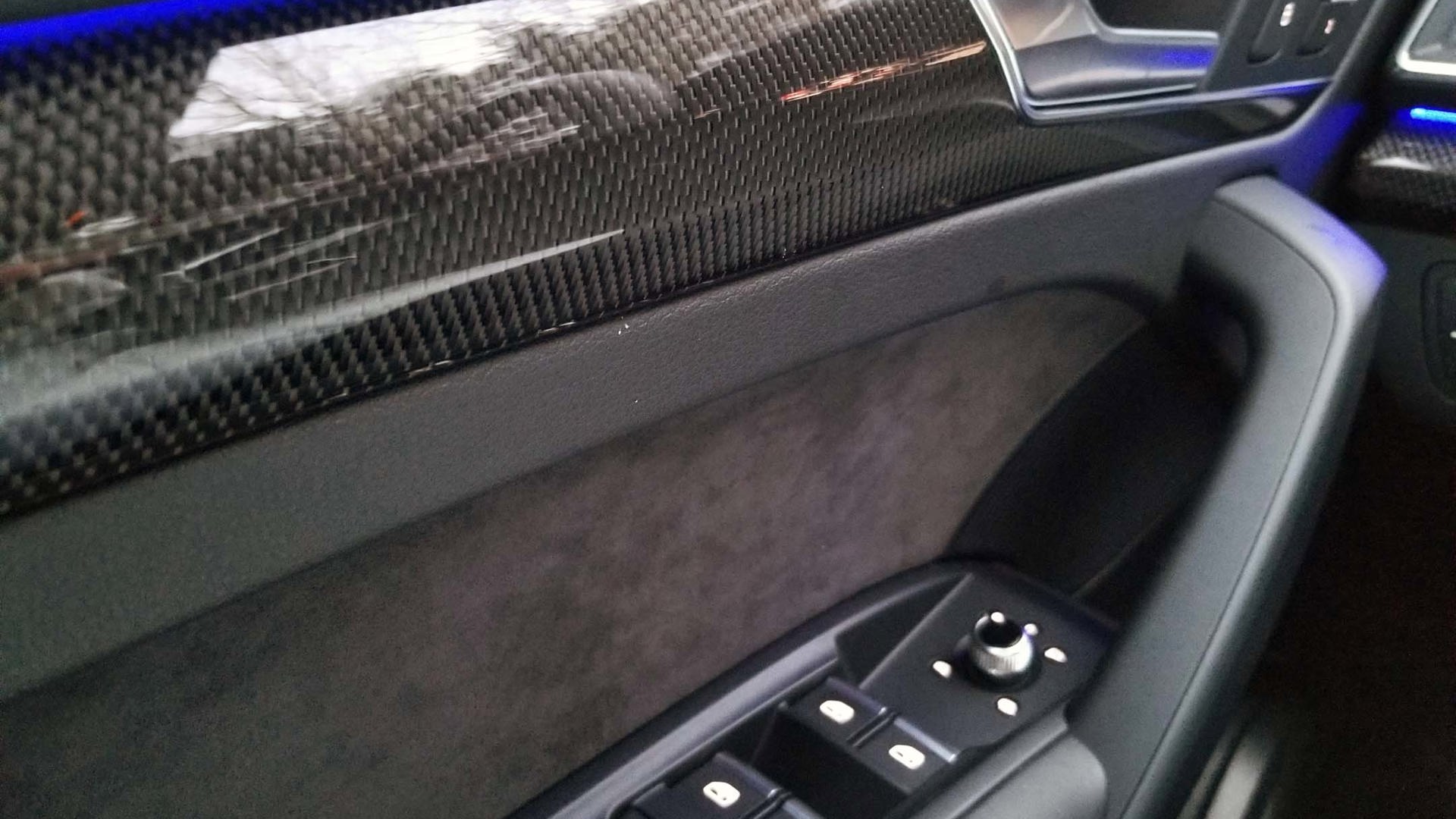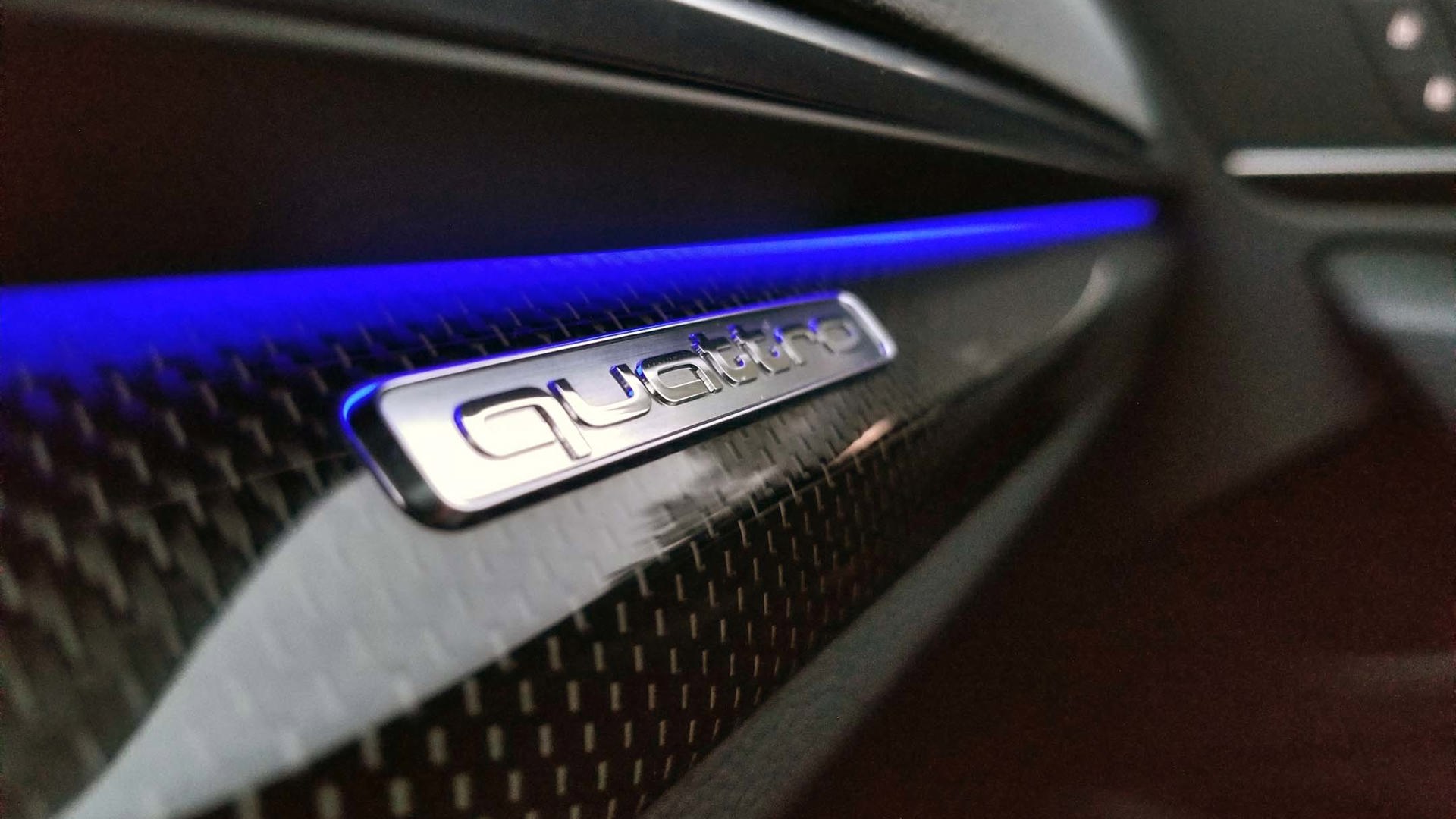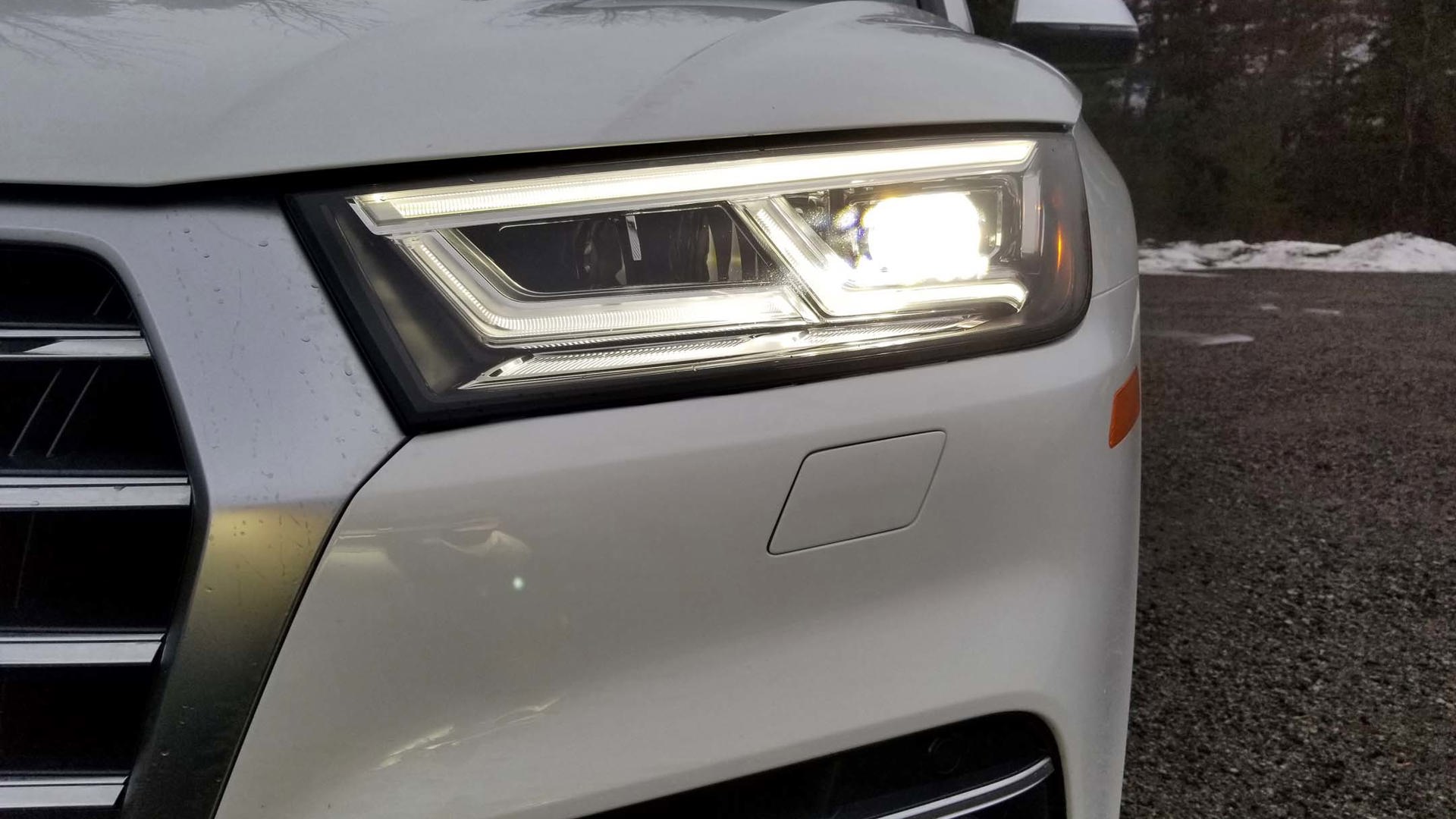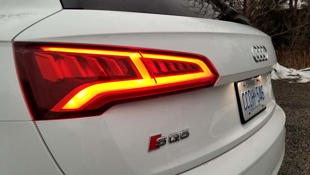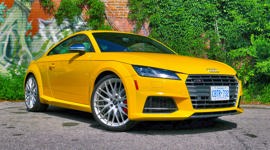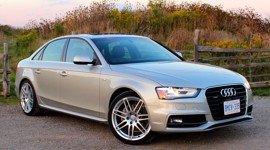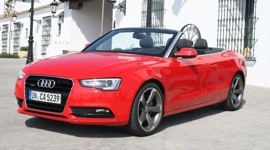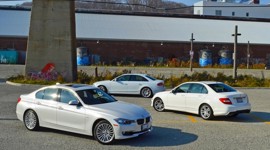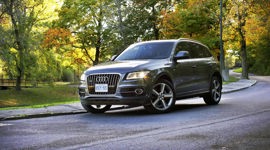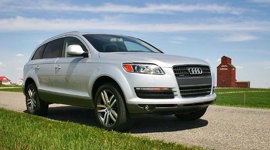 AutoTrader SCORE
AutoTrader SCORE
-
STYLING7/10
-
Safety8/10
-
PRACTICALITY8/10
-
USER-FRIENDLINESS7/10
-
FEATURES8/10
-
POWER7/10
-
COMFORT8/10
-
DRIVING FEEL8/10
-
FUEL ECONOMY8/10
-
VALUE8/10
We’re probably overdue for a philosophical discussion about this whole performance SUV thing.
It never hisses and spits at you like some of its contemporaries, and it doesn’t tend to flirt with the higher end of the rev range unless you push it there on your own.
When they first started hitting the market en masse a few years ago, they raised more than a few quizzical eyebrows. The idea that one car might be truly capable of both a spirited drive through a series of switchbacks and a bump along a rutted cottage lane – or a snowplow’s remnants at the end of a driveway, since this is Canada, after all – seemed improbable at best.
Here we are today, and not only have increasingly competent contenders emerged, but marques that once proclaimed the concept unthinkable are climbing onto the bandwagon – the upshot being that buyers have a lot more choice in this arena than they used to.
This lends the ability to ask: how much power and performance do I really need, and how much of it am I willing to leave on the table in return for a little more practicality?
Under that lens, the case for the Audi SQ5 comes into focus.
Hello turbo and torque, goodbye supercharger
The 2018 Audi SQ5 is the first model year of its second generation. Among the many changes this entails is a more efficient 3.0L TFSI V6 that’s now sporting a turbocharger instead of a supercharger. (Another one bites the dust.)
Its 354 horsepower output is the same, but the new engine puts out 23 lb-ft more torque for a total of 369 lb-ft that’s available from as low as 1,370 rpm. This plus other factors such as a variable-stroke compression process and a new setup for thermal management have made this mill more efficient. The official NRCan figure is 11.5 L/100 km combined; I averaged 12.1 in a week where my driving was split between about 70 percent city and country roads versus 30 percent highway. Among its direct competition, this puts the SQ5 on the better end of the average. The fact that it purrs along very happily at highway speed undoubtedly plays a role: the SQ5 sits at 1,550 rpm at 100 km/h and 1,800 at 120 km/h.
As with the previous generation, all-wheel drive is standard. In everyday driving, 60 percent of the power is sent to the rear wheels, and this can go up to 85 percent when needed. Our test unit is also equipped with the optional Quattro Sport rear differential, which can push nearly all of the available torque to the rear wheel that’s on the outside of a curve to add some bite to the SQ5’s cornering.
We were also able to sample the optional S adaptive air suspension, which gives the SQ5 a total of 60 mm of ride height adjustment. Confirmed Q5 buyers looking for this option will discover that selecting it from the SQ5’s option list is the only way to get it for 2018. Doing so gives you access to two additional drives modes: while the standard suspension allows for Auto, Comfort, Dynamic, and Individual settings, the air suspension adds All-road and Off-road modes to the list. With the air suspension equipped, selecting Dynamic reduces ground clearance by 10 mm from the standard 20.8 cm found in Comfort mode; in All-road it lifts above that by 30 mm, and in Off-road it lifts another 20 mm.
Add the SQ5’s new five-link front and rear suspension into the mix, and the upshot is that it handles like a dream – at least, it does on the twistiest roads I was able to find west of Toronto, which admittedly are hardly mountain passes. For as much as I was able to throw it around, it was remarkably planted while I did.
Carry that thought into the next point: the only transmission option to be had in the 2018 SQ5 is Audi’s eight-speed Tiptronic. It’s configured such that its lower gears are short for more sporty performance while the upper gears are longer for better efficiency (as seen by those low highway-speed revs noted above).
This, plus the fact that there’s no Sport-Plus mode to make the shift patterns even more angry, means that there’s no setting that forces the SQ5 to become truly aggressive. It never hisses and spits at you like some of its contemporaries, and it doesn’t tend to flirt with the higher end of the rev range unless you push it there on your own. This is where that philosophical question comes in: is this something you’d actually use often and get a lot of joy from as an owner? Or are you willing to give some of that up in return for everything else the SQ5 has to offer? Unless you’re actually considering taking your SUV to an autocross event, you’ll probably never notice and might even find the SQ5 to be more approachable than its competition. (Admittedly, though, it would be nice if it was a bit noisier for showing off to friends.)
Perhaps as a consequence of this, though, I also found that the SQ5 was happier to downshift more assertively than it really needed to in less urgent throttle moments, even in Comfort mode, which I found took away from some of its sense of smoothness. This doesn’t appear to be a common observation, so that could have been my driving style or something going on with our test unit. Mark it down as a factor to look for on your test drive.
Design tweaked, not radicalized
Audi tends not to rewrite the playbook between generations where exterior styling is concerned; and given how well the Q5 has sold in recent years, there was clearly no need. The subtle tweaks through the elongated headlights, more angular grille, stylized front air intakes, and accented shoulder-line all add to an already classic look.
On the inside, the updates are more apparent. The Nappa leather upholstery with diamond stitching, standard on the SQ5, gives an immediate impression of quality. The seats are comfortable, supportive, and highly adjustable – no complaints here. Heated front seats with power lumbar support and two-directional adjustable headrests are standard, as is a memory feature for the driver. The rear seat is a 40-20-40 split and comes with recline and slide functions, and choosing the Technik trim adds heat to the outboard positions.
A panoramic sunroof is also standard, as is a heated steering wheel. The Technik trim upgrades the camera from rear-view only to above-view and adds in heated and cooled cup holders. It also adds ambient lighting with a colour selector, a feature that’s more common in luxury vehicles recently but that I find easily turns gaudy. (Of course, the option is always there to set it to white and forget it.) Admittedly, though, when the colour is tasteful, its reflection does set off really beautifully against this test car’s optional carbon-fibre inlays.
Infotainment and ergonomic updates inside
One of the most dramatic changes in the new Q5, and therefore the new SQ5, is the new layout of the centre console. The shifter has been pulled back and the volume knob, which is still offset to the right, has been moved up, which means that one doesn’t get in the way of the other as easily as with the previous generation.
This makes room at the top for Audi’s touch interface, which is large enough to accept finger-drawn letters and pinch-and-pull inputs. This style of interface is becoming less common, so this might be a selling point for those who prefer it. I’m more of a dial person, and this layout’s functionality is very good in that regard as well. I especially enjoy that a quick tap left and right on the volume knob advances the radio station one at a time. (It’s the little things.) The system, as with most new Audi products, is equipped with Apple CarPlay and Android Auto as standard.
Safety upgrades galore, but largely optional
Select the Progressiv trim of the SQ5 and the suite of on-board safety and driver assistance systems is relatively rudimentary: Audi pre-sense basic, which closes the windows and tightens the belts when a collision is imminent, plus high-beam assist and front and rear parking sensors are about the extent of it.
Upgrade to the Technik trim, though, and the list expands extensively: Audi connect assistance and security (emergency calling, online roadside assistance, remote lock/unlock, stolen vehicle locator, geofencing, valet and speed alerts), Audi pre-sense rear (like basic, but for rear-end collisions), rear cross-traffic alert, Audi side assist (blind-spot monitoring), and exit warning (alerts you to vehicles approaching from behind when the car is stopped).
This tester is also equipped with the optional Advanced Driver Assistance Package, which adds on adaptive cruise control with stop and go, Audi pre-sense front (forward collision mitigation), Audi pre-sense city (cross-traffic vehicle and pedestrian detection), traffic sign recognition, Audi active lane assist (lane-keeping), and traffic congestion assist.
Verdict
Among a broadening range of competition in the performance SUV market, the 2018 Audi SQ5 is now one of the tamer offerings. Depending on what you realistically will use it for on a regular basis, this isn’t necessarily a bad thing. It’s approachable, practical, and delivers on elegant styling and a fulsome list of safety and connectivity offerings. For the long haul, it’s a steady all-rounder.
| Engine Displacement | 3.0L |
|---|---|
| Engine Cylinders | V6 |
| Peak Horsepower | 354 hp @ 5,400–6,400 rpm |
| Peak Torque | 369 lb-ft @ 1,370–4,500 rpm |
| Fuel Economy | 12.7/10.0/11.5 L/100 km city/hwy/cmb |
| Cargo Space | 550 / 1,550 L |
| Model Tested | 2018 Audi SQ5 Technik |
| Base Price | $65,900 |
| A/C Tax | $100 |
| Destination Fee | $2,095 |
| Price as Tested | $74,495 |
|
Optional Equipment
$6,400 – S Adaptive Suspension $1,000; Advanced Driver Assistance Package [adaptive cruise control with stop and go, Audi pre-sense front (forward collision mitigation), Audi pre-sense city (cross-traffic vehicle and pedestrian detection), traffic sign recognition, Audi active lane assist (lane-keeping), traffic congestion assist] $1,600; carbon atlas inlays $900; quattro sport differential $1,900; 21" 5-twin spoke wheels $1,000
|
|
